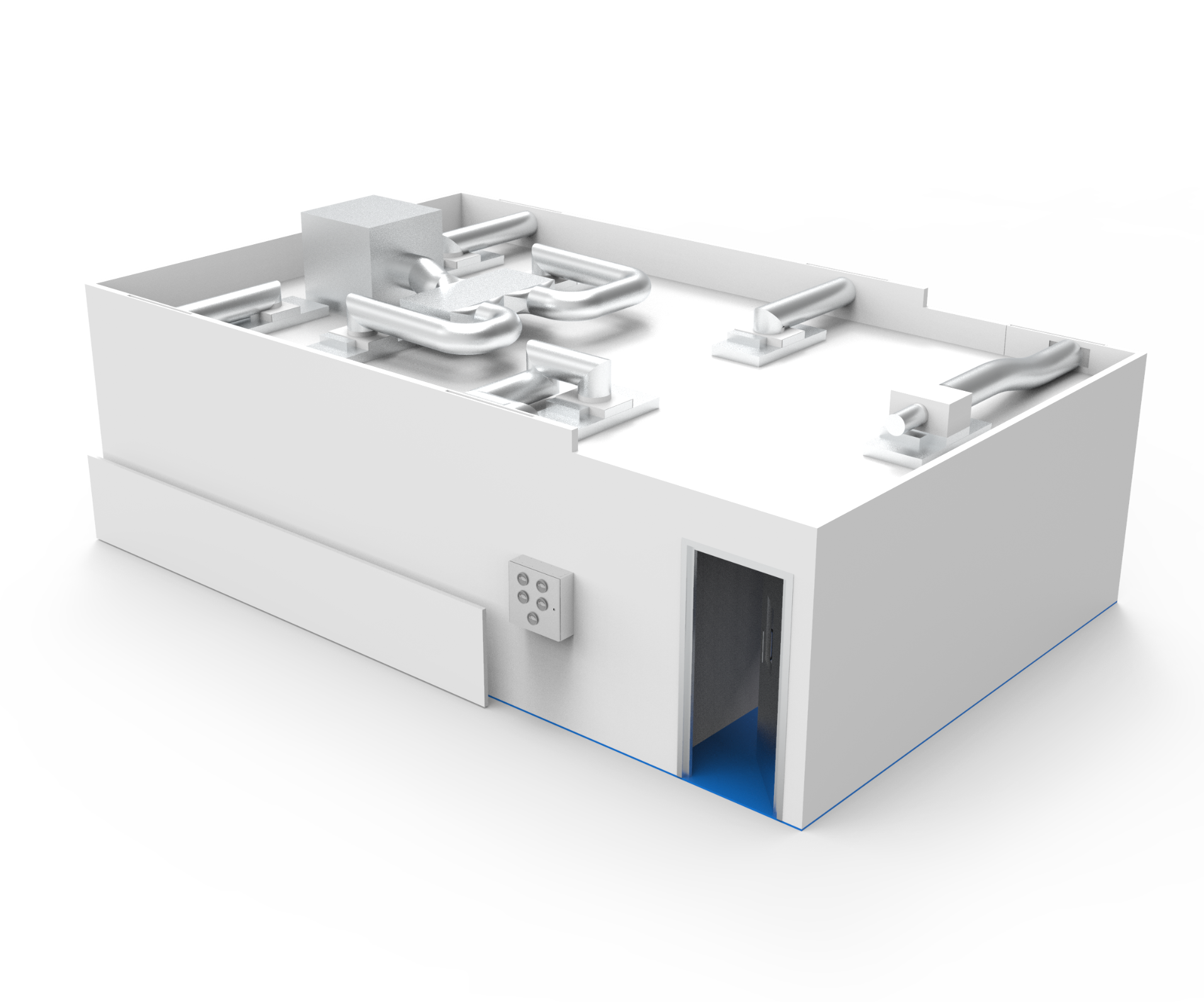The 4 factors to determine your ideal cleanroom wall type
If you’re working on a technical specification for a new cleanroom design and build project, you will have noticed there are different types of cleanroom wall materials in the market. The most popular types are softwall, hardwall, and monobloc. But you might not yet know which cleanroom envelope system is suitable for your project.
Well, we’re here to help you out as best we can. We know it can be tough to find the info you’re looking for, so we put together this blog to help you figure out your options for cleanroom walls.

Standards
The first consideration when choosing your cleanrooms wall system, is the cleanroom classification you need to meet. ISO cleanrooms have a different requirement to GMP cleanrooms.
Softwall cleanroom walls are the most economical type of modular cleanroom wall construction. Clear and flexible panels are mounted onto a robust steel frame, enclosing the clean area. As the panels overlap, the walls remain an effective barrier to create an ISO class 7-8 cleanroom, but with a higher volume of air required to achieve a higher level of cleanliness, you may need a solid wall panel.
HardWall cleanroom construction can withstand the high airflow required for ultra-clean environments such as ISO class 5-6 clean zones. But the bright and durable finish makes them an attractive option for ISO class 7-8 cleanrooms.
Monobloc cleanroom panels create a flush finish to a cleanroom wall, making them ideal for GMP cleanrooms and high-performance ISO cleanrooms. With a range of proprietary features, such as raceway trunking to supply services, flush glazing, doors, and wall and ceiling panels, you can custom-build the ideal envelope for your process.
Flexibility
One of the biggest concerns for any new cleanroom is deciding how flexible your cleanroom should be. Drywall coated with epoxy paint used to be a popular way to create cleanroom walls. But when it comes to stick-built cleanrooms, there’s minimal scope for rearranging or expanding the space you started with. Plus, providing the required extraction levels is challenging.
If you think your cleanroom is likely to expand once operations get underway, then a modular cleanroom would be a much better option. The materials might cost a bit more upfront, but you’ll also want to consider what you’d be getting for that additional fee.
Modular cleanroom wall panels are typically manufactured out of scratch and damage-resistant materials. This is helpful because if something runs into one of your modular wall panels, you don’t have to worry about drywall particulate below an epoxy coating seeping out and contaminating your cleanroom. If a modular wall panel gets a scratch, there’s very little cause for concern, and in most cases, you can return to business as usual. In a worst-case scenario, if the damage is substantial, you can arrange for a replacement panel to be easily fit into your existing system in no time.
Cleaning agents
Once you’ve decided on modular cleanroom walls, it’s time to consider the cleaning agents you’ll be using on those walls. Every cleanroom classification is different and requires different levels of cleaning and disinfection. Pharmaceutical cleanrooms, for example, must be disinfected regularly with very harsh chemicals to prevent microbial build-up. In this situation, you need a Monobloc cleanroom wall finish that can hold up to those chemicals without corroding. Walls with a cleanroom-specific coating are typically suitable for applications that use powerful cleaning materials.
On the other side of the coin, if you plan on cleaning your cleanroom regularly but don’t need to use the highest-grade disinfectants, Hardwall cleanroom wall panels are a more cost-effective choice. When using lower-grade cleaning materials, you need a wall panel that prevents bacteria and particulate from sticking to it. You won’t have to worry about harsh chemicals eating through coatings and materials, causing a lot of particulate buildup within your cleanroom.
Cost
Perhaps the most significant consideration for your cleanroom wall material decision is your budget. And if you’re looking for an area of the project where you can save money, walls could be it. With cleanrooms, particulate control is the most critical factor, so it stands to reason that a large part of the investment goes into the air handling. Your cleanroom walls can be one of the least costly aspects of your cleanroom as they are relatively low-tech. Because of this, many cleanrooms don’t look as expensive as they are.
That said, a few companies want their cleanrooms to reflect the expense put into them, so they spend more on their walls to create the look of a high-tech, cutting-edge facility. But know that you don’t have to have the highest specification of walls to meet your cleanroom standards.


READY TO START A NEW PROJECT?
Our design and build specialists have experience working with customers in all kinds of industries on a global scale, achieving great results time and time again. We’d love to work with you as well!
REQUEST A QUOTE